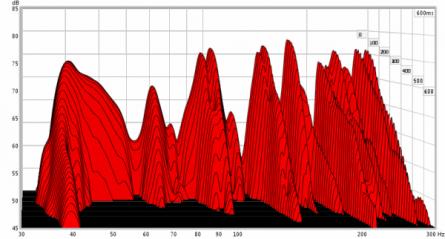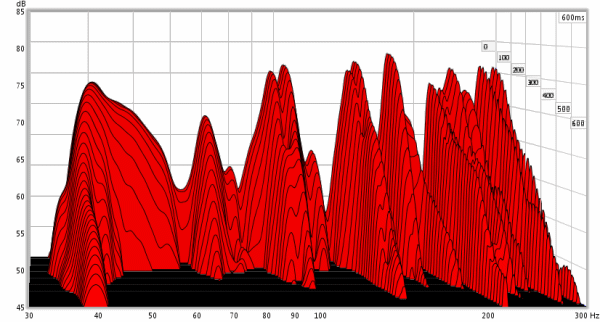RT30 is just fine and is actually part of international standard for such measurements. No one tries to measure true RT60. Programs like REW use sine sweeps that provide much gain over traditional impulse response anyway. Here is a sample using UMM-6:Most people are referring we do need a large dynamic range for for audio measurements - however in order to properly measure RT60 we need a low noise floor. Although most of the time software interpolate RT60 from RT30, as we do not have absolute noise levels in the shown measurements, how can we be sure that these horrible spikes from the UMM-6 do not affect the decay measurements?
Yes, Amir I know you are not an RT60 dependent ...

This was at moderately loud levels and as you can see, it has nearly 60 dB of dynamic range anyway due to above technique. And what is left, is true noise and not the distortion spikes. For the rough measurement that RT60 is in small rooms, there is no limitation here.


















